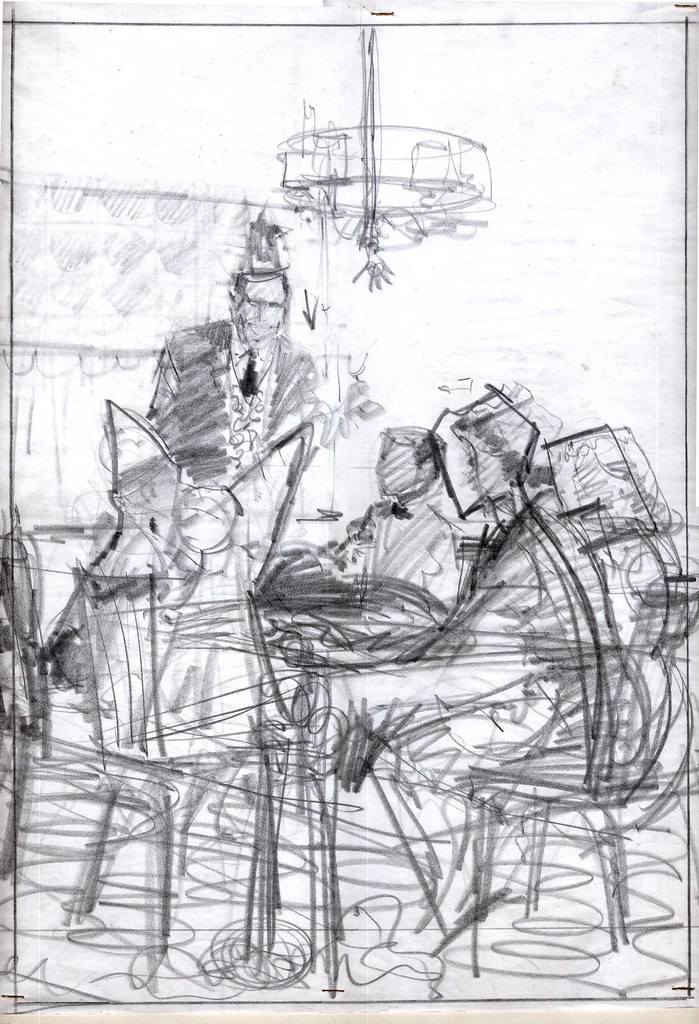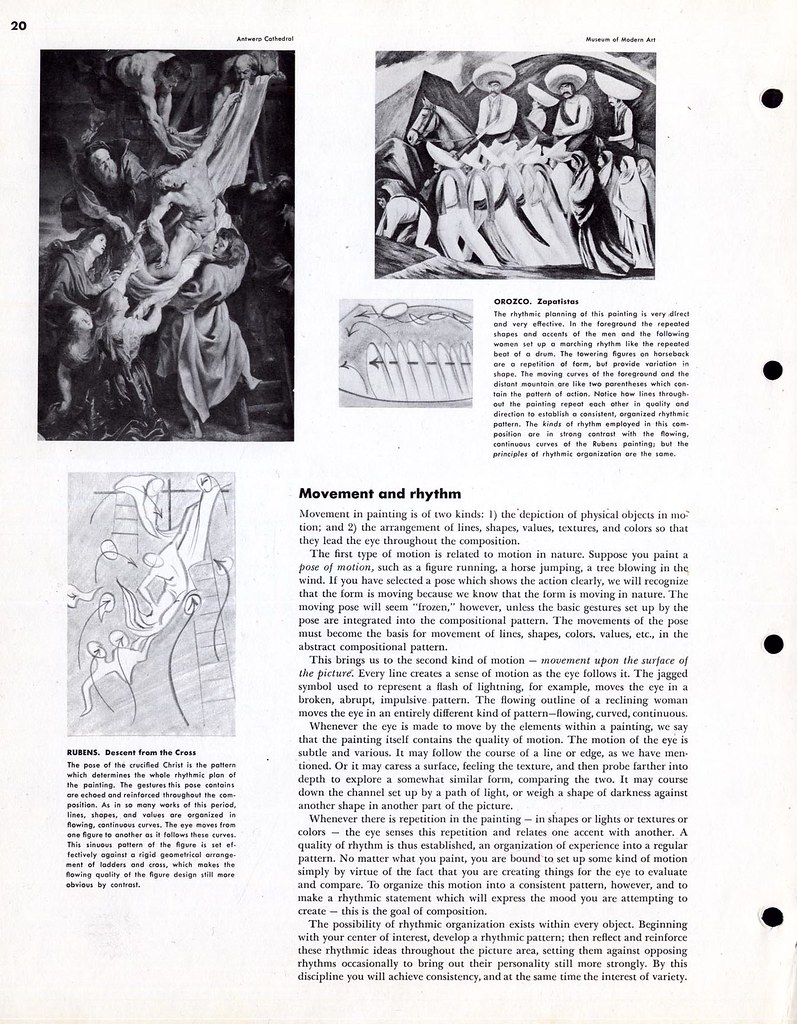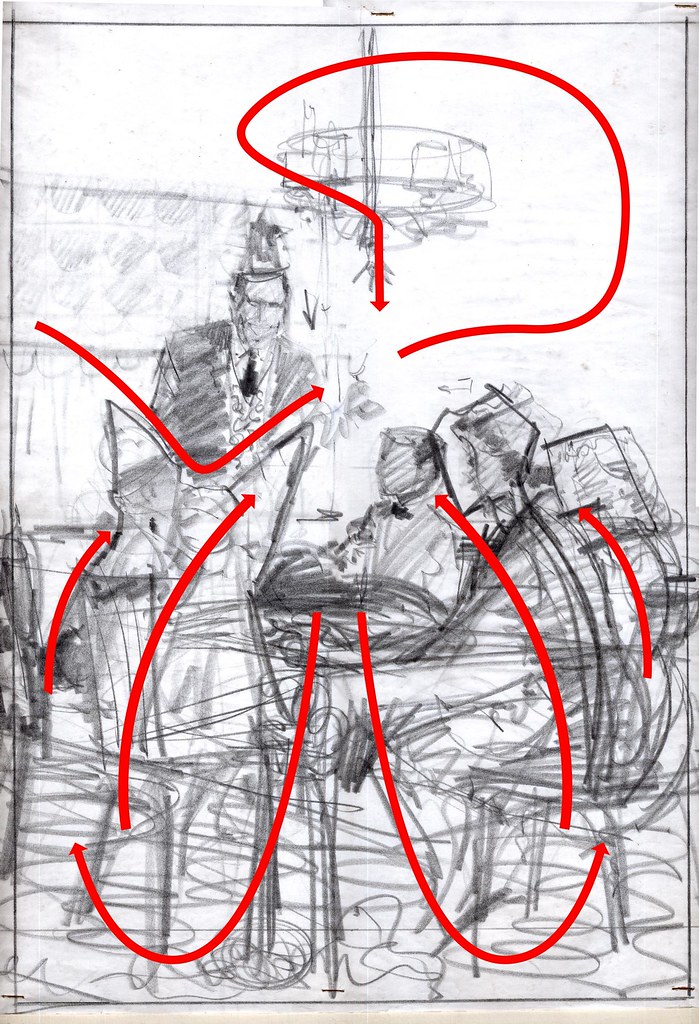
To that end, and in spite of feeling fairly confident with his rough sketch, Will would do a second rough on top of the first to check if his composition was sound. He calls this stage "checking the lines of movement".
In the Famous Artists Course lesson on 'Composition' we learn that there are two kinds of movement in a painting:
1) the depiction of physical objects in motion
2) the arrangement of lines, shapes, values, textures, and colors so that they lead the eye throughout the composition.

Will would slip his rough under a clean sheet of bond paper and re-sketch the elements of his composition a little more clearly, looking for and emphasizing how the shapes and lines caused the viewer's eye to move subconsciously through the picture and find the focal point.
Again from the FAS course:
Whenever there is repetition in the painting - in shapes or lights or textures or colors - the eye senses this repetition and relates one accent with another. A quality of rhythm is thus established, an organization of experience into a regular pattern.
By superimposing these red lines over his drawing, we can see how Will determined in his second rough that he had indeed established movement and rythm in the overall composition:

This is also the point at which Will would more accurately organize his elements. In the case of this illustration, Will moved some figures so that none of the faces of the people at the table are obstructed by the limbs or bodies of others in the foreground, which, if you scroll down to yesterday's post, you can see was happening in the reference photos.
You can examine these images more closely in my Will Davies Flickr set and my FAS Flickr set.
Thank you very much for your advice. Also, there is a great guide https://essaytoolbox.com/guide/how-to-write-an-essay that helped me a lot with understanding of fundamentionals.
ReplyDelete